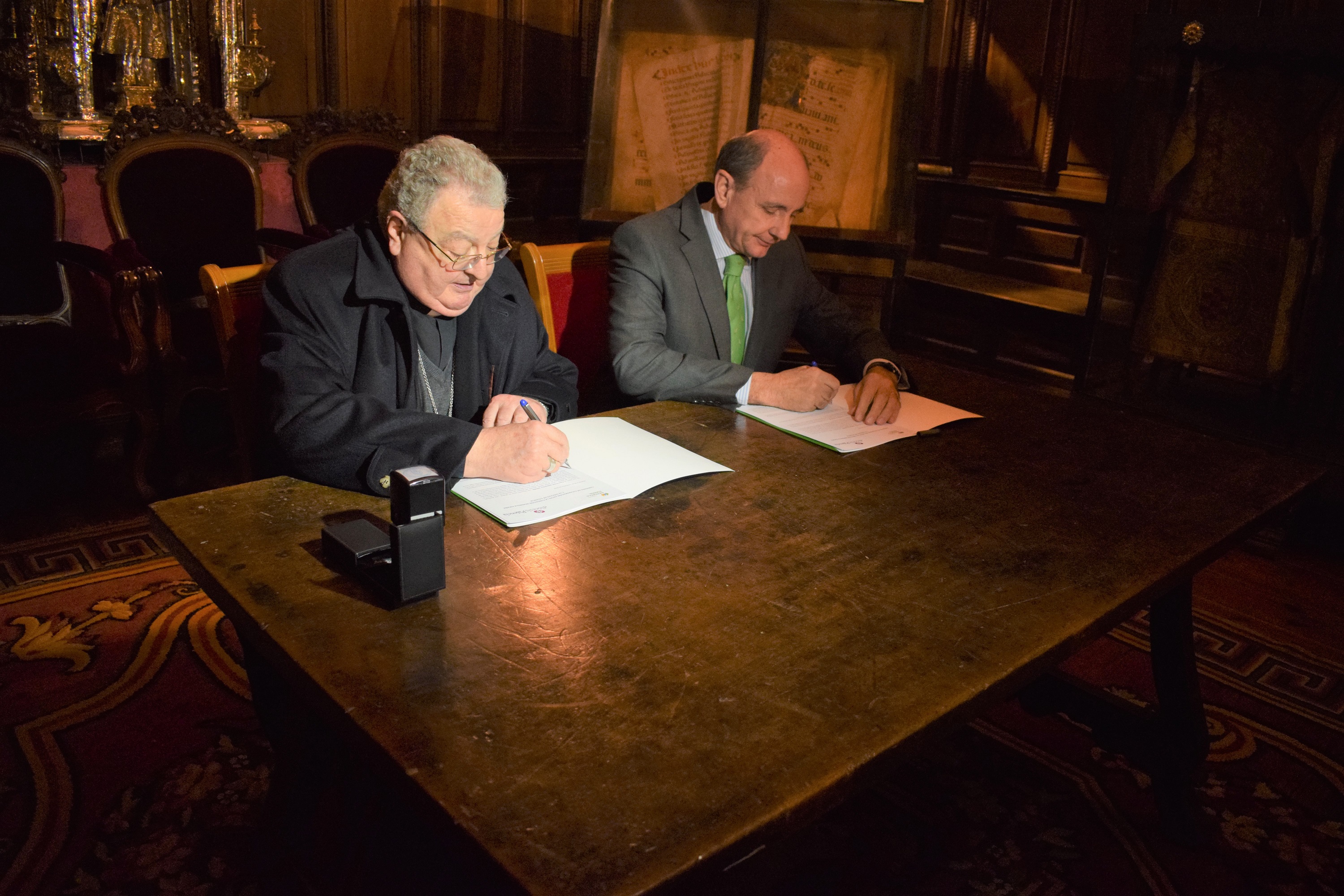Fundación Iberdrola is to provide lighting for the interior of Palencia Cathedral
- The bishop of Palencia, Manuel Herrero, and the director of Fundación Iberdrola España, Ramón Castresana, signed an agreement this morning for the renovation of the interior lighting of Palencia Cathedral, which will highlight the beauty of its architectural features
- The latest LED technology will be used on the project, which will involve an investment of 220,000 euros
Palencia. The bishop of Palencia, Manuel Herrero, and the president of Fundación Iberdrola España, Ramón Castresana, signed an agreement this morning in the presence of the cathedral’s dean, Ángel de la Torre; the chairman of Fundación Iberdrola España, Fernando García; the diocesan heritage and canonical delegate, José Luis Calvo, and Iberdrola’s representative for Castille and León, Miguel Calvo, for the renovation of the interior lighting of Palencia cathedral.
This initiative will provide new artistic lighting for the naves, the transept, the vaults, the great altarpiece, the sanctuary chapel and the Visigothic crypt. It will also emphasise, by means of accent lighting, unique items such as the choir and will be the final touch to the cathedral’s renovation.
The lighting, with an estimated budget of €220,000, will make use of the latest LED technology to accentuate the beauty of the building’s architectural elements, and will be designed in such a way as to respect its heritage and spiritual values.
The replacement and renewal of the lighting in the Cathedral of Palencia is another example of Iberdrola’s commitment to the region of Castille and León and its enduring mission to promote the social value of the region’s culture and roots and conserve its historical-artistic heritage.
The Cathedral of Saint Antoninus
Construction of the Cathedral of Palencia, in Gothic style (though it also features elements typical of the Roman and Visigothic periods), commenced at the beginning of the 14th century. Work continued on it until the 16th century. As well as being a Catholic place of worship, it is the episcopal seat of the Diocese of Palencia and the first monument in the city of Palencia to be declared a National Monument.
The cathedral is built on a Latin cross base with three naves and two transepts. In addition, it has a Gothic chancel and an ambulatory consisting of seven chapels with stained glass windows decorated with tracery stonework, and a double pointed arch triforium. The Visigothic Crypt of Saint Antoninus, where some of the relics of the city’s martyr and patron saint are kept, can be found in the central nave and is a particularly important part of the architectural whole, since it is a reflection of the Visigothic and proto-Romanesque period.
Fundación Iberdrola’s commitment to culture
Fundación Iberdrola undertakes projects on artistic monuments and unique buildings to install or improve the interior and/or exterior lighting, in order to help enhance the appreciation of historical and artistic heritage and improve the energy efficiency of these systems.
One example of this type of action is Iluminando el Prado/Lighting the Prado, the comprehensive lighting project for the Prado Museum using LED technology, which was a pioneering and benchmark initiative in Europe when it was launched.
The Salamanca Festival of Light and Avant-Garde is another example of the company’s commitment to innovative projects. Since 2016, this city has been welcoming renowned artists, young talent and specialist companies that use light as a raw material in their works.
In a similar vein, Fundación Iberdrola España has been carrying out an ambitious restoration and conservation project on Romanesque art across Spain and Portugal since 2010. Labelled the “Plan Románico Atlántico”, this is a joint cross-border project with the Portuguese State Secretariat for Culture and the Castille and Leon Regional Parliament. The second stage of this project is progressing apace, boosting sustainable socio-economic growth in the area, based on its own resources: the people who live there, the natural environment, and its own cultural heritage.



